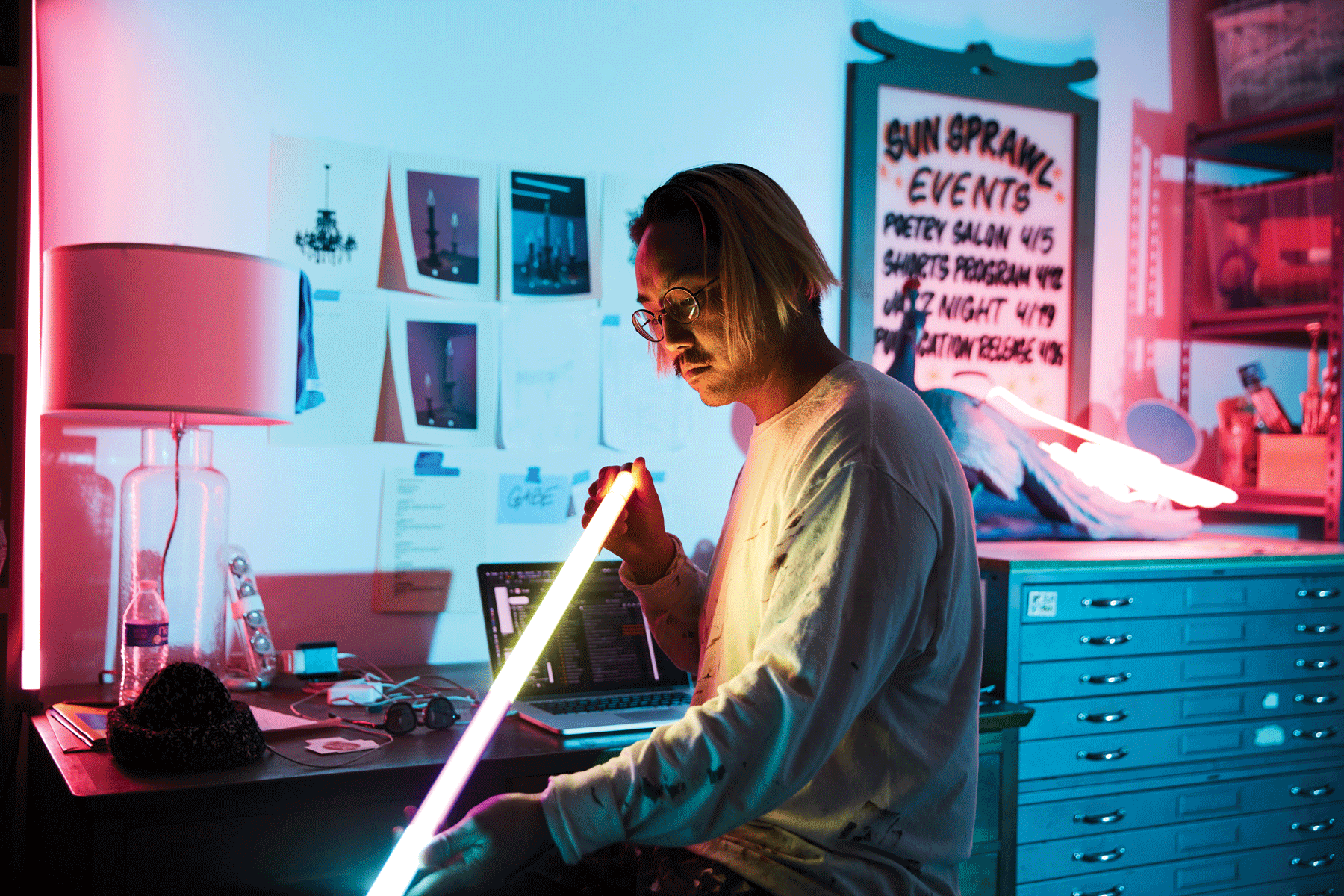This is a preview of our feature on Greg Ito in Issue 17, out May 11.
As creatures of habit, it’s easy to take life for granted. We do it all the time. Routinely scrolling as we look down, we often forget to look up and experience the magic in everyday life — a certain amnesia that may arise from absorbing life not as it’s lived but as we believe it should be lived–as seen digitally. Swiss author, Alain de Botton extends this agitation in Art as Therapy, by stating, “The urge to pick up a camera stems from an anxious awareness of our cognitive weaknesses about the passage of time: that we will forget the Taj Mahal, the walk in the country, and, most importantly, the precise look of a child as they sat building a Lego house on the living room carpet, aged seven-and-three-quarters.”
Despite this struggle with time, Japanese-American artist, Greg Ito, reminds us that “magic still exists.” 
How did your art-making begin?
I was born and raised on the west side of Los Angeles, near Venice. I’m a fourth-generation Los Angeles Japanese-American and most of my family are creative types all working in various art related work (visual art, animation, special effects, graphic design, architecture, craftsman, seamstress, etc.) except for my parents who were pharmacists. My parents have always supported my art by enrolling me in after-school art programs and taking my younger brother and I to the art store to get supplies. They gave me my first studio in high school, which was half of their garage. Ever since I was young I would say, “I want to be an artist when I grow up,” focusing on the art projects in school while ignoring any essays or homework I had to do.
Going to my uncle’s studio growing up was a huge inspiration. I thought to myself that one day I would have a studio of my own and be working in there every day. In high school I went to a summer art program at Cal Arts called CSSSA, which changed my life in a way, finalizing my decision to go to college for art.
I went to SFAI in San Francisco in 2005, graduated in 2008, and then opened a gallery called Ever Gold Gallery and co-founded a free art publication called SFAQ (San Francisco Arts Quarterly) working on those endeavors for over five years. I left those endeavors to focus on my art—best decision ever. San Francisco became a bust due to the techie uprise making the Bay unaffordable, pushing out a majority of the creative community, and so I left to come home to my city, Los Angeles. Been back for five years or so and probably never leaving again.
Your juxtaposition of colors and themes are quite distinct, dark, and fluorescent alongside love and heartbreak.
It’s true that the images I choose for paintings contrast with one another. I was influenced by Rothko and his color field paintings, where he inspired emotional tensions in his work through his use of color and their registration on the canvas. I aim to do the same through my choices of imagery and symbols in my work and their compositions as isolated vignettes paired together sparking various narratives. My color palette is also something I’ve been developing over time, almost like a color code. When I look at my paintings, it reminds me of times I wake from a dream and can only remember fragments, leaving me to piece it together to find meaning. I hope people do the same when they see the work.
You state that “all the interesting things happen at the transitions.” Can you explain this further?
When I say, “All the interesting things happen at the transitions,” I’m talking about the beauty that exists between the good and the bad, the darkness and the light, hope and failure, companionship and loneliness. Life has its mysterious ways of being beautiful and ugly at the same time, and it’s when things are in flux or in a state of change where I find these moments more interesting and dynamic. 
What mediums do you look to explore next?
I’m always looking for new mediums to explore. Overall, I’m primarily looking for opportunities where I can build environments using the overall breadth of my practice: painting, sculpture, and installation. I love watching people explore an exhibition once it’s installed and open to the public. To see people navigating the space and interacting with the work is really special. I hope to include more sound and scents in future projects when the time is right.
For more from Greg Ito, follow him on Instagram.
